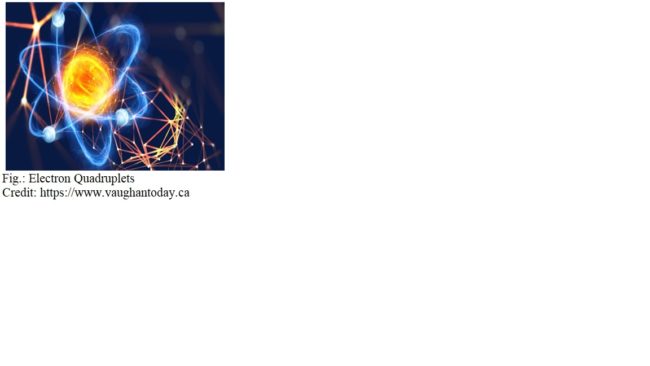Electrons (with negative charge) and protons (or ions) (with positive charge) are well accepted to make pairs well within the scope and nature of electrostatic forces between these charged particles. Dipole (a combination of two equal and opposite charges separated by a small distance), quadruple (a combination of two dipoles), octopole (a combination of two quadruples) and so on are well known combinations in electrodynamics. But, the existence of electron- electron pair (called Cooper pair) came into account in order to explain the superconductivity. Actually, Cooper pairs of electrons are responsible for superconductivity. A Cooper pairor BCS pair (Bardeen–Cooper–Schrieffer pair) is a pair of electrons (or other fermions) bound together at low temperatures in a certain manner first described in 1956 by American physicist Leon Cooper. The Cooper pair state is responsible for superconductivity, as described in the BCS theory developed by John Bardeen, Leon Cooper, and John Schrieffer for which they shared the 1972 Nobel Prize. Existence of Cooper pair was theoretically explained on the basis of electron-electron interaction through lattice and was experimentally verified on the basis of quantization of magnetic flux measurements in superconductors. Cooper pairs are formed by electron-phonon interactions – an electron in the cation lattice will distort the lattice around it, creating an area of greater positive charge density around itself.
Now Physicists have come up with idea that not only electron pairs but novel electron pairs of pairs may also be commonplace and even find use in sensors. Experiments have now revealed a new state of matter—electron quadruplets—which researchers suggest may one day lead to new kinds of sensors as well as untold other novel applications. The new discovery invites comparisons to the mechanisms underlying superconductors, materials that conduct electricity without dissipating energy. Superconductivity relies on electrons not repelling each other as they do in ordinary materials, but instead forming weakly bonded duos known as Cooper pairs, which can flow with zero resistance. Nearly 20 years ago, Egor Babaev, a theoretical physicist (now at the KTH Royal Institute of Technology in Stockholm, Sweden) and his colleagues suggested it was also possible for electrons to form quartets. They later predicted electron quadruplets could form within materials such as barium potassium iron arsenide. According to scientists, this is a new state of matter that is no less interesting than superconductivity and super fluidity. The case of superconductivity shows that the electrons are able to condense into pairs. It made physicists wonder if these negatively charged particles could also condense into quadruplets. Already in 2004, Igor Babaev, a professor of theoretical physics, predicted this so-called quaternary effect. In 2012, he had planned that it could happen in real material. Today it is an international team, headed by the Royal Swedish Institute of Technology, which is finally providing the first experimental evidence of this new state of matter obtained on an iron-based material, Ba1-xNSxFe2as2 and from it, the researchers predict there are many more materials where electron quadruplets can form.
The researchers suggested these “quartic phases” could arise before materials achieved superconducting states, when temperature and other conditions prevented the condensation of Cooper pairs but allowed the formation of electron foursomes. The first experimental glimpses of this novel state happened accidentally in 2017, when study lead author Vadim Grinenko, an experimental physicist at the Technical University of Dresden in Germany, and his colleagues discovered superconductivity in barium potassium iron arsenide. They discovered thermal, electrical and magnetic anomalies they could not account for even though a great effort was taken to make better measurements to get rid of that impossible effect. One exotic property of the quartic state is that there are spontaneously forming flows that produce local magnetic fields. Such spontaneous currents and magnetic fields are not seen with Cooper pairs and typical superconductors. It remains uncertain what applications this new discovery might hold, if any. However, the ways in which quartets of electrons can move in relation to each other can be significantly more complex than seen with pairs of electrons, so scientists expect that a lot of new physics will be revealed, inevitably resulting in new applications. Scientists add that the unconventional properties that appear with electron quartets could potentially find use in sensors.



